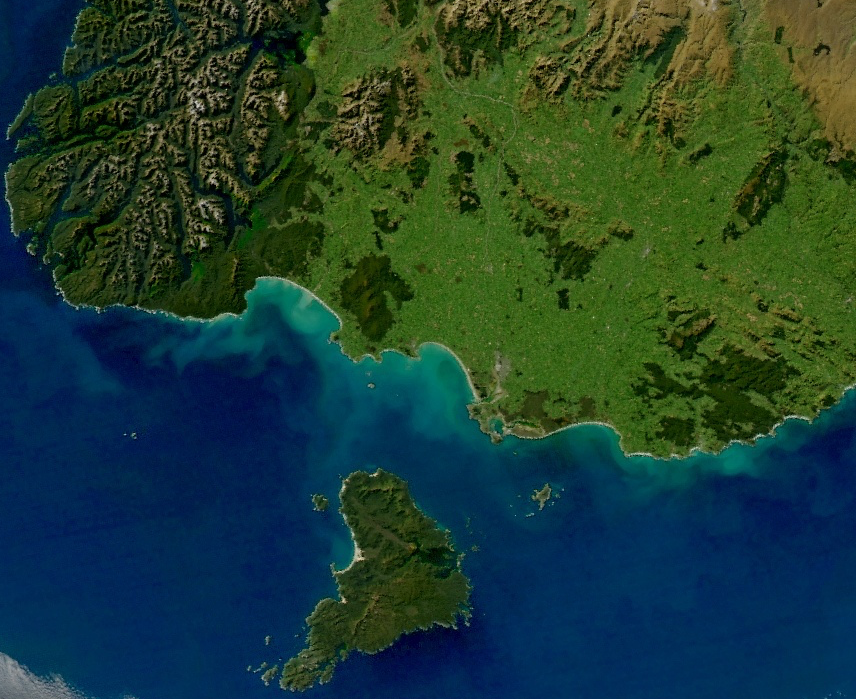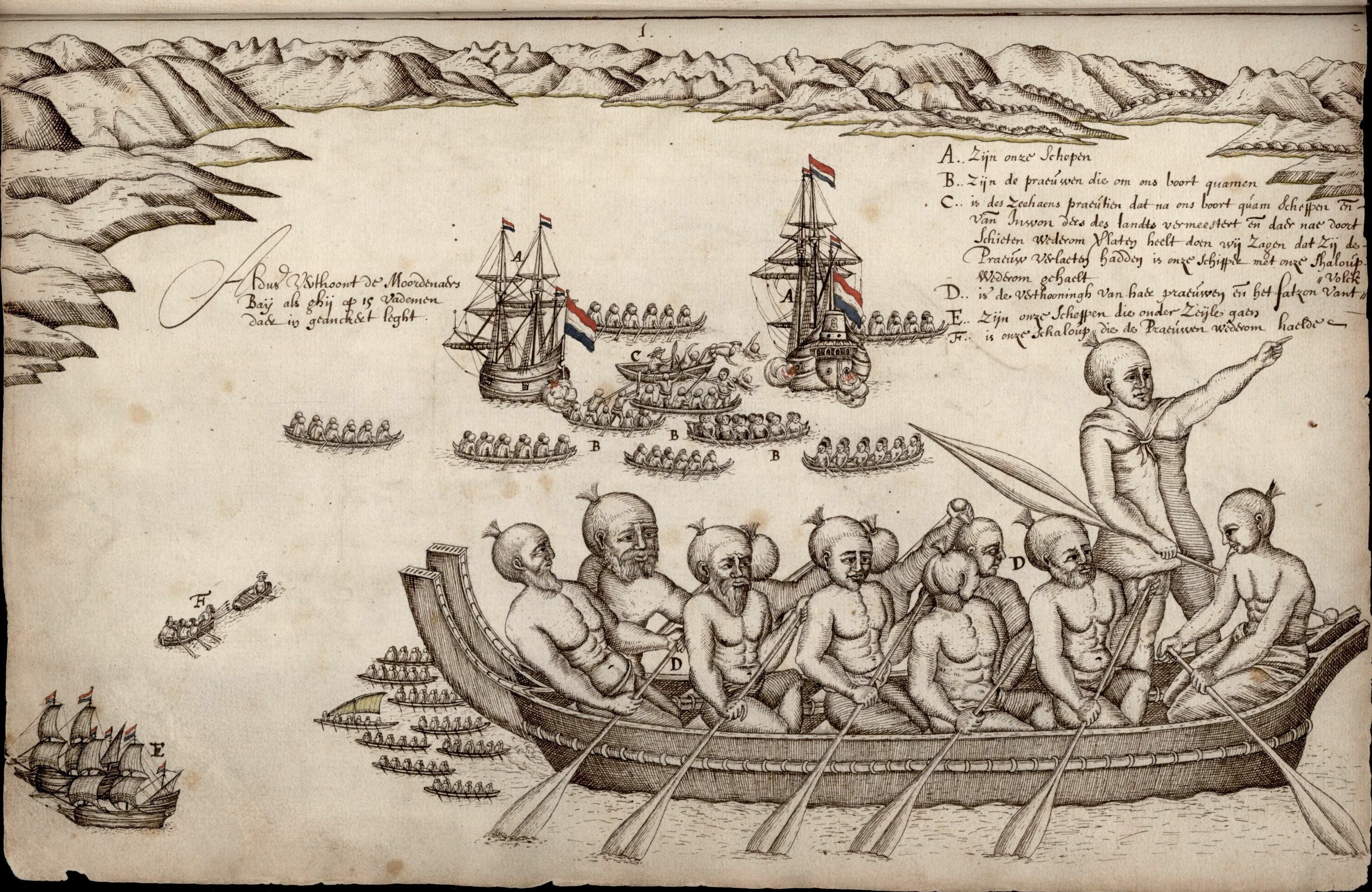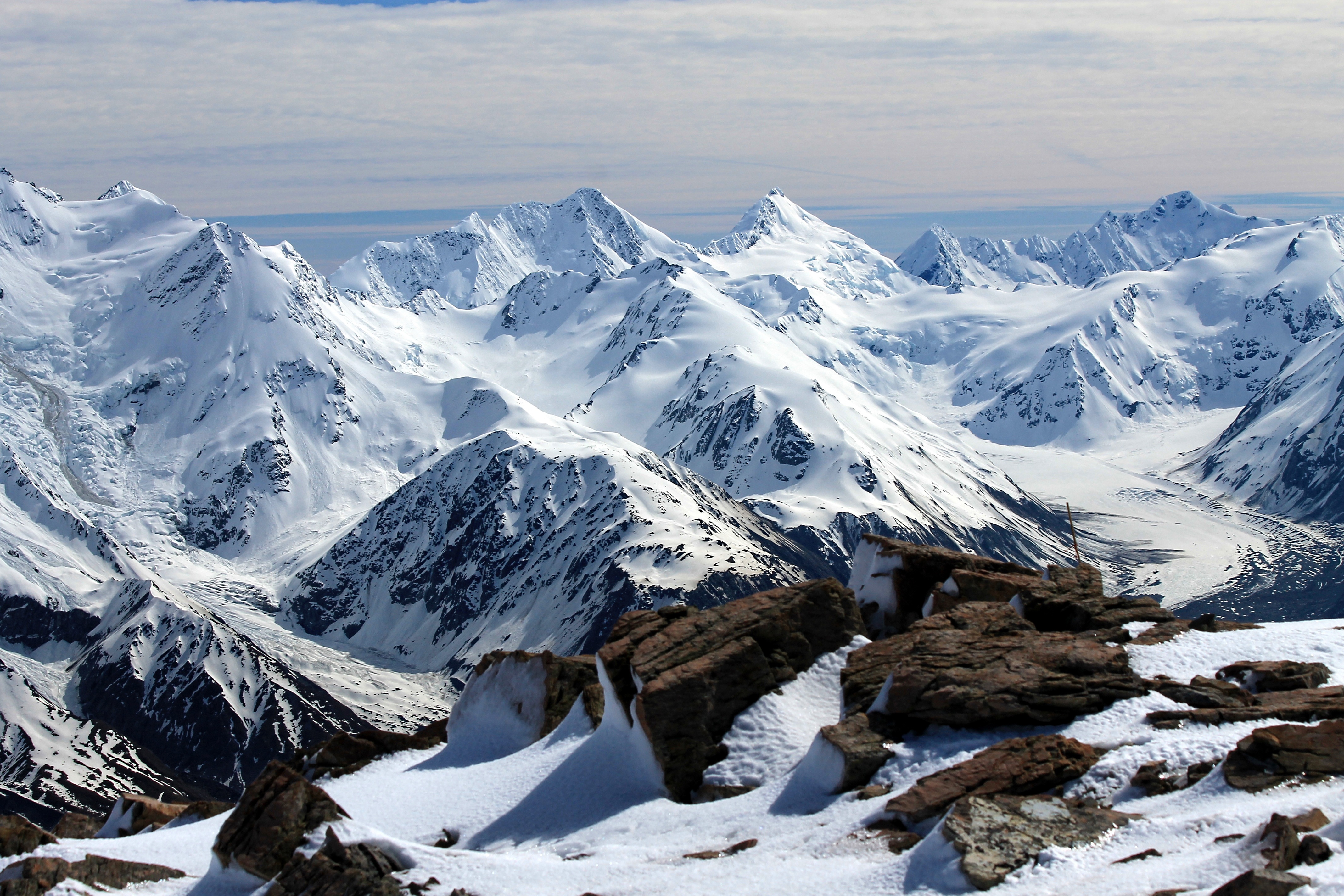|
Uruao
(also ; often known simply as ) was one of the great ocean-going, voyaging canoes () that was used in the migrations that settled the South Island according to Māori tradition. is linked to many southern , first landing near Nelson. The was captained by Rākaihautū, who was accompanied by his wife Waiariki-o-āio, their son Te Rakihouia, and a man named Matiti. Origins Originally, was said to belong to a chief from Te Patunuioāio named Taitewhenua. He decided to give the canoe to the renowned (astronomer) Matiti, who then gave it to Rākaihautū and encouraged him to use it to explore new lands. In the 9th century, Rākaihautū, accompanied by his wife Waiariki-o-āio, their son Te Rakihouia, Matiti, and other kin of the Te Kāhui Tipua, Te Kāhui Roko, and Te Kāhui Waitaha tribes, set sail across the Pacific Ocean in search of new land. Voyage and arrival On the journey to the South Island the heavens and the ocean blocked the canoe's path, until Rākaihautū ... [...More Info...] [...Related Items...] OR: [Wikipedia] [Google] [Baidu] |
Rākaihautū
Rākaihautū was the captain of the canoe () and a Polynesian ancestor of various , most famously of Waitaha and other southern groups, though he is also known in the traditions of Taitokerau and in those of Rarotonga. In Māori traditions, once Rākaihautū landed the at the top of the South Island, he moved southward and dug up many of the island's major lakes using a magical (digging stick), filling them with food for his many descendants. Origin Rākaihautū originally sailed with his wife Waiariki-o-āio, their son Te Rakihouia, and their people from Te-patunui-o-āio aboard the canoe over 34 generations ago. The crew included some of Rākaihautū's kin who were of the tribes Te Kāhui Tipua, Te Kāhui Roko, and Te Kāhui Waitaha. Rākaihautū's daughter Te Uhi-tataraiakoa stayed behind in Te-patunui-o-āio. On the journey to the South Island, the heavens and the ocean blocked the canoe's path until Rākaihautū chanted a and cut a passage with his adze. He ... [...More Info...] [...Related Items...] OR: [Wikipedia] [Google] [Baidu] |
Waitaha (South Island Iwi)
Waitaha is an early Māori iwi, which inhabited the South Island of New Zealand. They were largely absorbed via marriage and conquest – first by the Ngāti Māmoe and then by Ngāi Tahu – from the 16th century onward. Today those of Waitaha descent are represented by the Ngāi Tahu iwi. Like Ngāi Tahu today, Waitaha was itself a collection of various ancient iwi. Kāti Rākai was said to be one of Waitaha's hapū. History Origins Waitaha's earliest ancestors are traditionally traced as arrivals from Te Patunui-o-āio in Eastern Polynesia aboard the canoe ( waka), of which Rākaihautū had been the captain. He was accompanied by his wife and son, Waiariki-o-āio and Te Rakihouia, the renowned (astronomer) Matiti, Waitaa, and other kin of the Te Kāhui Tipua, Te Kāhui Roko, and Te Kāhui Waitaha iwi. When genealogies are interpreted with 25–30 years' worth of lifespan for at least 34 generations, these people are calculated to have lived in or around the 9th cen ... [...More Info...] [...Related Items...] OR: [Wikipedia] [Google] [Baidu] |
Foveaux Strait
Foveaux Strait ( ; ) is a strait that separates Stewart Island from the South Island of New Zealand. The width of the strait ranges from about , and the depth varies between . The strait was first charted by an American Seal hunting, sealer, Owen Folger Smith. He charted the strait from a whaleboat of the sealing brig ''Union (1802 ship), Union'' in 1804. The passage was named Foveaux Strait in March 1809, after Joseph Foveaux, the Lieutenant-Governor of New South Wales in Australia. Ferry services across Foveaux Strait began in 1877 and continue to operate regularly between Bluff, New Zealand, Bluff Harbour and Oban, New Zealand, Oban. The strait has been described as "one of the roughest and most unpredictable stretches of water in the world". Severe weather and sea conditions in the strait have contributed to Foveaux Strait#Shipwrecks, multiple shipwrecks and fatalities. One of these losses was the wreck of the SS Tararua, SS ''Tararua'' in 1881—the worst maritime disaster ... [...More Info...] [...Related Items...] OR: [Wikipedia] [Google] [Baidu] |
List Of Māori Waka
This is a list of Māori people, Māori (canoes). The information in this list represents a compilation of different oral traditions from around New Zealand. These accounts give several different uses for the waka: many carried Polynesians, Polynesian migrants and explorers from Hawaiki to New Zealand; others brought supplies or made return journeys to Hawaiki; was said to be lost at sea. List of waka See also *Māori migration canoes *List of Māori iwi *Lists of marae in New Zealand References * {{DEFAULTSORT:List of Maori waka Māori waka, Māori-related lists, Waka Polynesian navigation ... [...More Info...] [...Related Items...] OR: [Wikipedia] [Google] [Baidu] |
Māori Mythology
Māori mythology and Māori traditions are two major categories into which the remote oral history of New Zealand's Māori people, Māori may be divided. Māori myths concern tales of supernatural events relating to the origins of what was the observable world for the pre-European Māori, often involving gods and demigods. Māori tradition concerns more folkloric legends often involving historical or semi-historical forebears. Both categories merge in to explain the overall origin of the Māori and their connections to the world which they lived in. The Māori did not have a writing system before European contact, beginning in 1769, therefore they relied on oral retellings and recitations memorised from generation to generation. The three forms of expression prominent in Māori and Polynesian oral literature are genealogical recital, poetry, and narrative prose. Experts in these subjects were broadly known as . The rituals, beliefs, and general worldview of Māori society were ... [...More Info...] [...Related Items...] OR: [Wikipedia] [Google] [Baidu] |
Karakia
Karakia are Māori incantations and prayer used to invoke spiritual guidance and protection.Karakia , Otago University website. Retrieved 23 July 2019. They are also considered a formal greeting when beginning a . According to Māori legend, there was a curse on the Waiapu River which was lifted when George Gage (Hori Keeti) performed karakia. In |
Matahourua
In Māori tradition, ''Matahourua'' was the canoe of the legendary hero Kupe, who, in some accounts, was the discoverer of Aotearoa (New Zealand) See also *List of Māori waka This is a list of Māori people, Māori (canoes). The information in this list represents a compilation of different oral traditions from around New Zealand. These accounts give several different uses for the waka: many carried Polynesians, Poly ... References *R.D. Craig, ''Dictionary of Polynesian Mythology'' (Greenwood Press: New York, 1989). *G. Grey, ''Polynesian Mythology'' (reprint Taplinger Press: New York, 1970). Māori waka Māori mythology {{Māori-myth-stub ... [...More Info...] [...Related Items...] OR: [Wikipedia] [Google] [Baidu] |
Glenavy, New Zealand
Glenavy is a small town in the South Island of New Zealand. It is located at the southern extreme of the Canterbury region on the alluvial fan of the Waitaki River, from the river's outflow into the Pacific Ocean. Glenavy was named for Glenavy, Northern Ireland, the birthplace of former New Zealand Premier John Ballance. Demographics Glenavy is described as a rural settlement by Statistics New Zealand, and covers . It had an estimated population of as of with a population density of people per km2. The settlement is part of the larger Morven-Glenavy-Ikawai statistical area. Glenavy had a population of 195 at the 2018 New Zealand census, a decrease of 6 people (−3.0%) since the 2013 census, and an increase of 66 people (51.2%) since the 2006 census. There were 105 households, comprising 105 males and 90 females, giving a sex ratio of 1.17 males per female. The median age was 58.4 years (compared with 37.4 years nationally), with 18 people (9.2%) aged under 15 years, 30 ... [...More Info...] [...Related Items...] OR: [Wikipedia] [Google] [Baidu] |
Lake Ellesmere / Te Waihora
Lake Ellesmere / Te Waihora is a shallow coastal lake or waituna, in the Canterbury, New Zealand, Canterbury region of the South Island of New Zealand. It is directly to the west of Banks Peninsula, separated from the Pacific Ocean by the long, narrow, sandy Kaitorete Spit. It lies partially in extreme southeastern Selwyn District and partially in the city of Christchurch's district. The lake holds high historical and cultural significance to the indigenous Māori language, Māori population and the traditional Māori name ''Te Waihora'' means ''spreading waters''. It has officially had a dual English/Māori name since at least 1938. Geography and hydrology Lake Ellesmere / Te Waihora is a Brackish water, brackish bar-type water body, commonly called a lake or lagoon. It covers an area of , and is New Zealand's fifth largest lake. Nature Southern elephant seals have been observed here, spending short periods in the lake. Basking sharks have occasionally entered the lake. ... [...More Info...] [...Related Items...] OR: [Wikipedia] [Google] [Baidu] |
Banks Peninsula
Banks Peninsula () is a rocky peninsula on the east coast of the South Island of New Zealand that was formed by two now-extinct volcanoes. It has an area of approximately . It includes two large deep-water harbours — Lyttelton Harbour and Akaroa Harbour — and many smaller bays and coves. The South Island's largest city, Christchurch, is immediately north of the peninsula which, is administered by Christchurch City Council. The main settlements are Lyttelton and Akaroa. The peninsula's economy is based on fisheries, farming and tourism. Māori were the first people to visit, and settle, the peninsula. The sparse population was reduced further following massacres by raiding parties of North Island Māori in 1830 and 1832. In 1770, explorer James Cook became the first European to sight the peninsula, which he mistook for an island, naming it after his ship's botanist Joseph Banks. From the 1830s, European whalers set up shore-based stations in some of the bays and harbo ... [...More Info...] [...Related Items...] OR: [Wikipedia] [Google] [Baidu] |
Kaikōura
Kaikōura (; ) is a town on the east coast of the South Island of New Zealand, located on New Zealand State Highway 1, State Highway 1, north of Christchurch. The town has an estimated permanent resident population of as of . Kaikōura is the seat of the territorial authority of the Kaikōura District, which is part of the Canterbury, New Zealand, Canterbury region. Kaikōura was first inhabited by the Māori people, Māori, with the Ngāi Tahu iwi occupying the area since at least 1670. Europeans began to settle in Kaikōura in the mid 1840s. By the 1850s, land that had been acquired was sold to European settlers, who most often started sheep farms in the area. Mount Fyffe in the Kaikōura Ranges, Seaward Kaikōura Range is named in honour of Robert Fyffe and his family, the first European settlers in the area. The infrastructure of Kaikōura was heavily damaged in the 2016 Kaikōura earthquake, with one of the two deaths near the town. The bay and surrounding region were u ... [...More Info...] [...Related Items...] OR: [Wikipedia] [Google] [Baidu] |
Southern Alps
The Southern Alps (; officially Southern Alps / Kā Tiritiri o te Moana) are a mountain range extending along much of the length of New Zealand, New Zealand's South Island, reaching its greatest elevations near the range's western side. The name "Southern Alps" generally refers to the entire range, although separate names are given to many of the smaller ranges that form part of it. The range includes the South Island's Main Divide, which separates the drainage basin, water catchments of the more heavily populated eastern side of the island from those on the west coast. Politically, the Main Divide forms the boundary between the Marlborough Region, Marlborough, Canterbury Region, Canterbury and Otago regions of New Zealand, regions to the southeast and the Tasman Region, Tasman and West Coast, New Zealand, West Coast regions to the northwest. Names The Māori language, Māori name of the range is , meaning "the Fata Morgana (mirage), Mirage of the Ocean". The English people, ... [...More Info...] [...Related Items...] OR: [Wikipedia] [Google] [Baidu] |





